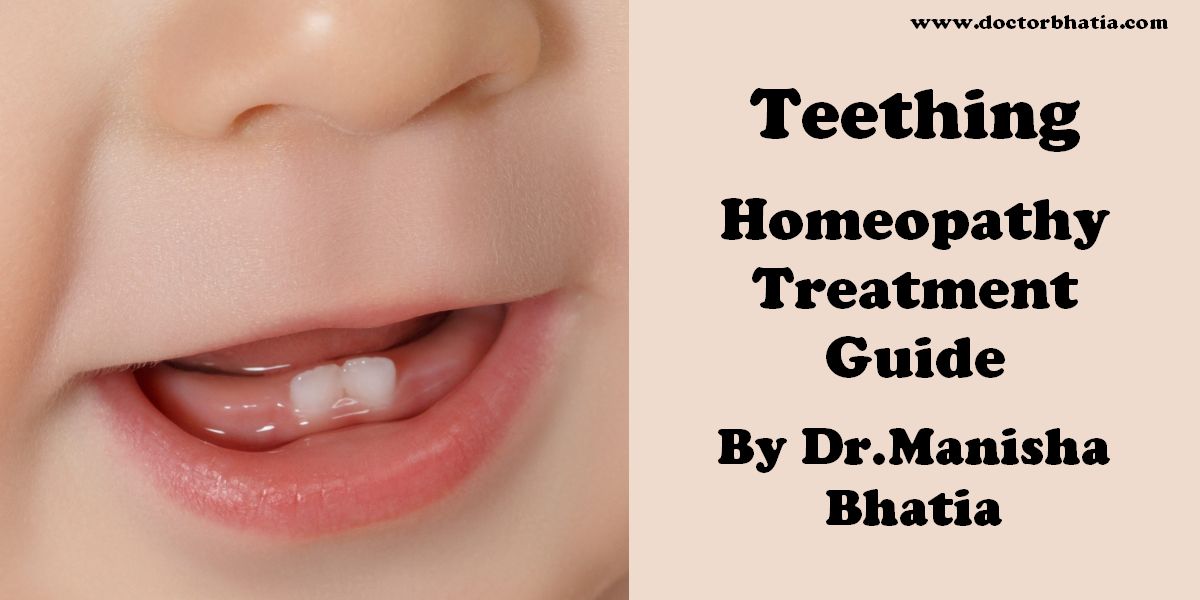Teething is the process during which an infant’s teeth start to sequentially grow in. Teething can start as early as three months or as late, in some cases, as twelve months. Occasionally a baby may even present with one or more teeth at birth. The typical time frame for new teeth to appear is somewhere between six and nine months. It can take up to several years for all 20 deciduous (aka “baby” or “milk”) teeth to emerge. The process of teething is sometimes referred to as “cutting teeth”.
6 month infant with lower central incisors already visible
The infant teeth tend to emerge in pairs – first one upper incisor emerges then the other upper incisor emerges before the next set begin to emerge. The general pattern of emergence is:
- Lower central incisors (2)
- Upper central incisors (2)
- Upper lateral incisors (2),
- Lower lateral incisors (2)
- First molars (4)
- Canines (4)
- Second molars (4)
Milk teeth tend to emerge sooner in females than in males. The exact pattern and initial starting times of teething appear to be hereditary. When and how teeth appear in an infant has no bearing on the health of the child.
During teething, the new teeth break through the surface of the gums. Signs of teething may include
- Poor mood
- Loss of appetite
- Chewing of objects
- Bruises/swelling in gums
- Excess salivation
- Runny nose
Teething has not been shown to cause fever. A slight rise of temperature may occur when the teeth come through the gum, but this does not make a baby ill.
Infants chew on objects to aid in the teething process. This can be dangerous if the baby is allowed to chew on objects which are small enough to be swallowed or which could break while being chewed and cause choking. Teething rings and other toys are often designed with textures that will appeal to an infant during teething.
In cases where the infant is in obvious pain, some doctors recommend the use of anti-inflammatories or child-safe pain-relief treatments containing benzocaine. Some infants gain relief from chewing on cold objects.
Dentists recommend brushing infants’ teeth as soon as they appear. It is not advisable to wait for the teething process to be complete. Dentists may recommend against the use of fluoride toothpaste during teething.
Homeopathy Treatment for Teething
Keywords: homeopathy, homeopathic, treatment, cure, remedy, remedies, medicine
Homeopathy treats the person as a whole. It means that homeopathic treatment focuses on the patient as a person, as well as his pathological condition. The homeopathic medicines are selected after a full individualizing examination and case-analysis, which includes the medical history of the patient, physical and mental constitution, family history, presenting symptoms, underlying pathology, possible causative factors etc. A miasmatic tendency (predisposition/susceptibility) is also often taken into account for the treatment of chronic conditions. A homeopathy doctor tries to treat more than just the presenting symptoms. The focus is usually on what caused the disease condition? Why ‘this patient’ is sick ‘this way’. The disease diagnosis is important but in homeopathy, the cause of disease is not just probed to the level of bacteria and viruses. Other factors like mental, emotional and physical stress that could predispose a person to illness are also looked for. No a days, even modern medicine also considers a large number of diseases as psychosomatic. The correct homeopathy remedy tries to correct this disease predisposition. The focus is not on curing the disease but to cure the person who is sick, to restore the health. If a disease pathology is not very advanced, homeopathy remedies do give a hope for cure but even in incurable cases, the quality of life can be greatly improved with homeopathic medicines.
The homeopathic remedies (medicines) given below indicate the therapeutic affinity but this is not a complete and definite guide to the homeopathy treatment of this condition. The symptoms listed against each homeopathic remedy may not be directly related to this disease because in homeopathy general symptoms and constitutional indications are also taken into account for selecting a remedy. To study any of the following remedies in more detail, please visit the Materia Medica section at Hpathy.
None of these medicines should be taken without professional advice and guidance.
Homeopathy Remedies for Teething :
Acon., aeth., am-c., ant-c., ant-t., apis., arn., ars., arund., bell., bism., bor., bry., calc., calc-f., calc-p., canth., caust., cham., cheir., chlor., cic., cimic., cina., coff., colch., coloc., cupr., cypr., dol., dulc., ferr., ferr-p., gels., graph., hecla., hell., hep., hyos., ign., ip., kali-br., kreos., lyc., mag-c., merc., merc-c., mill., nat-m., nit-ac., op., passi., phyt., plat., podo., puls., rheum., scut., sec., sep., sil., sol-n., stann., staph., sulph., syph., ter., tub., tub-k., zinc., zinc-br.



